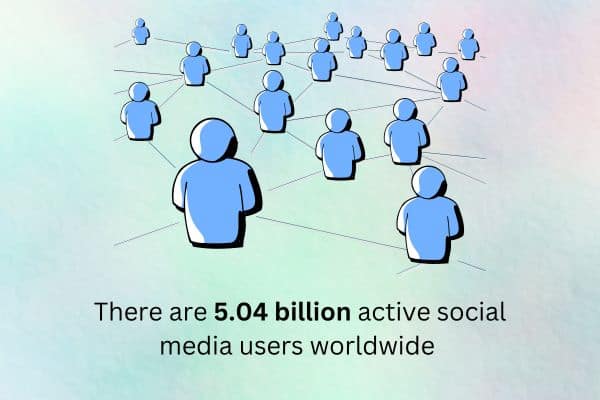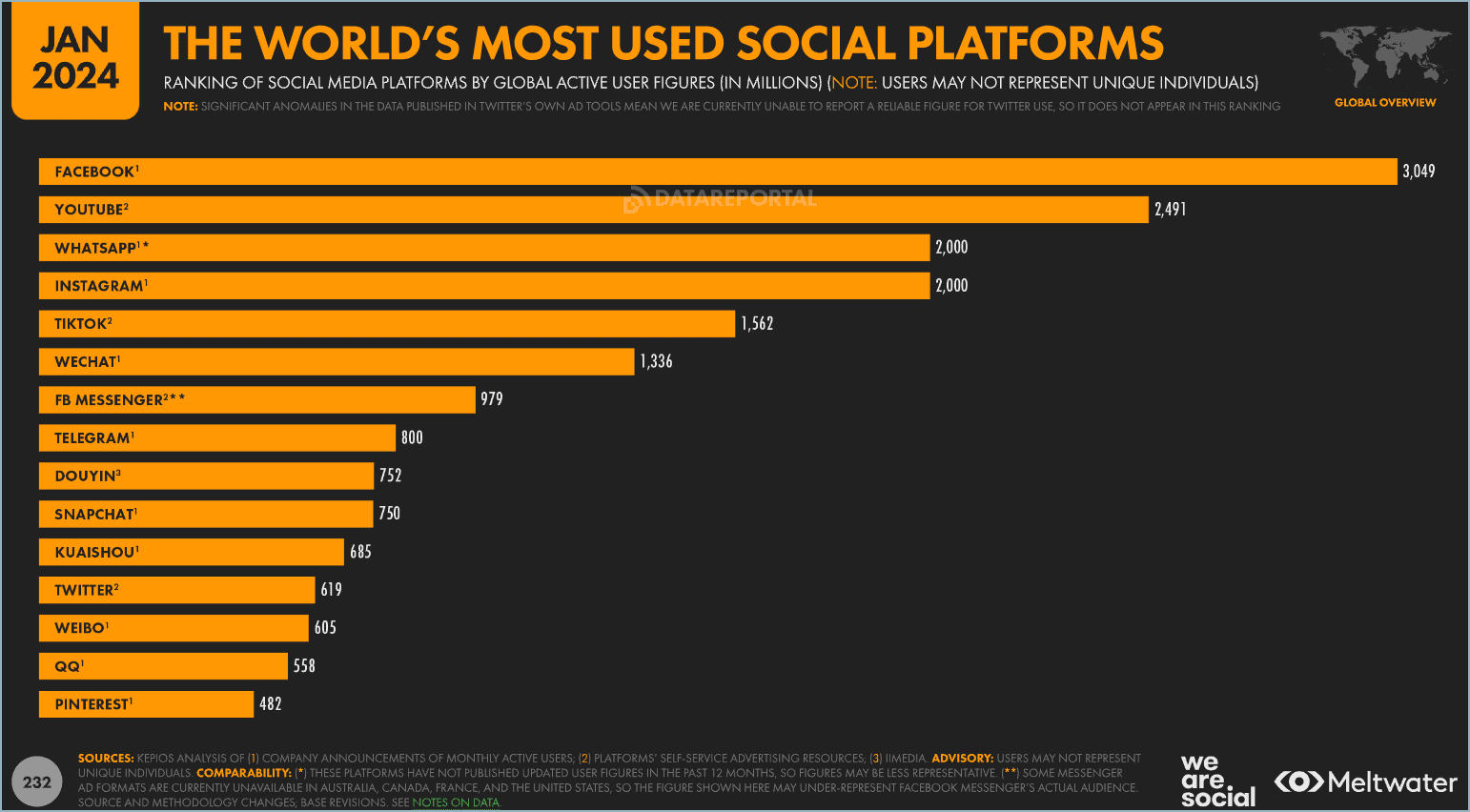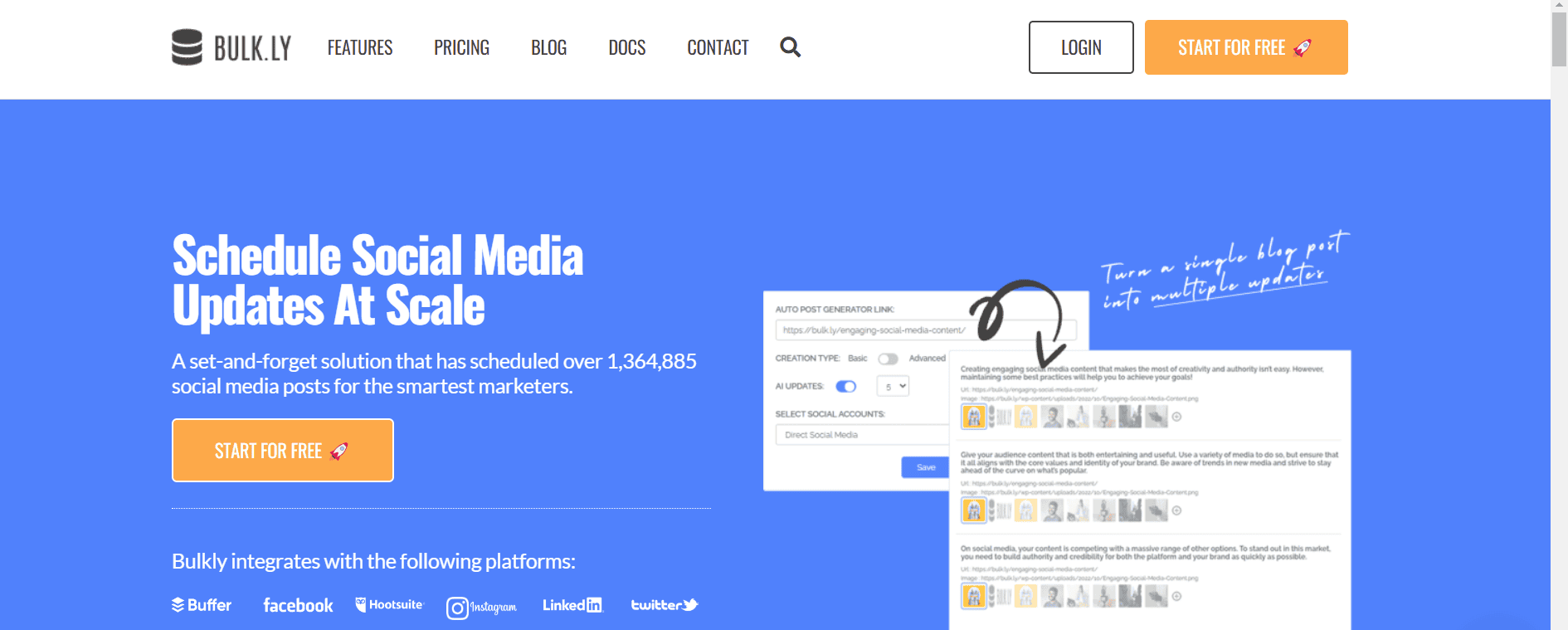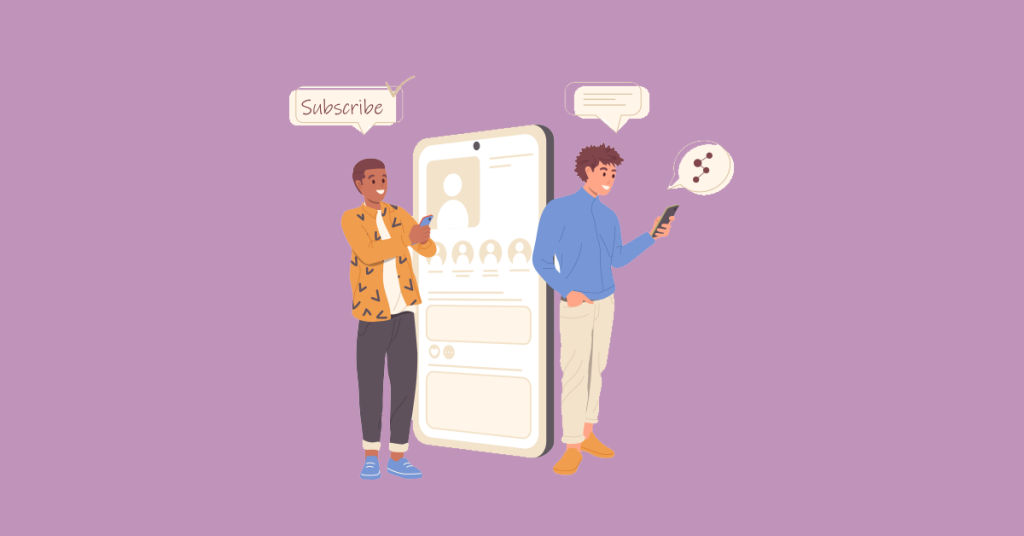Gone are the days when you could post whatever you liked on social media and receive views and clicks. If you want your customers to find and engage with you on these platforms in 2024, you need to know where they exist online and what kind of content they want to see. This is where creating a social media persona comes in.
Social media personas pinpoint the behaviors, psychology, and motivations of your target audience. By delving deep into the minds of your prospective customers, you can align your strategy with their needs to increase brand awareness, engagement, and conversions.
Eager to level up your social media game by creating a persona? Then let’s explore what they are and some best practices for building one.
What is a Social Media Persona?
A social media persona is a fictional personification of your ideal customer. It’s similar to a general buyer persona, except it includes details specific to your target customers’ social media usage.
So, alongside key demographic and psychographic information, a social media persona will describe what platforms your target customer uses. It will also detail things like the kind of content they engage with, how often they consume it, and other social media behaviors.

Free-to-use image sourced from Pexels
You can use social media personas to:
- Identify potential high-value customers.
- Curate a brand tone and message that resonates with your buyers.
- Create content that aligns with your target customers’ needs and interests.
- Identify the best ways to connect with your audience to maximize engagement.
The Benefits of Creating Social Media Personas
Creating a fictitious characterization of your target customer takes a lot of the guesswork out of your marketing strategies. Essentially, you gain insight into what your customers want, which makes it easier to attract, engage, and convert them.
Let’s explore some of the main benefits of using social media personas.
Narrows Your Marketing Focus
With so many social media channels and types of content to choose from, knowing what to post and where to post it isn’t always obvious. But instead of relying on trial and error, you can turn to your persona.
Social media personas uncover which channels your target customers are on and what type of content they prefer. From the get-go, you can avoid spreading your time and resources too thinly by focusing only on the platforms and content that are likely to drive customer engagement and conversions.
Creates Personalized, Consistent Customer Experiences
Social media personas tap into the specific needs, goals, preferences, and interests of your customers too.
Using this knowledge to inform your social media strategy, you can develop consistent, engaging content that directly addresses their pain points—exactly when they want it.
Helps You Build Better Customer Relationships
There are lots of ways to connect with customers. You can use paid or free email services providers to send targeted messages or connect with customers via telephone and SMS. But if you really want to open the door for two-way communication and build authentic, inclusive relationships in eCommerce, social media is unmatched.
That said, there are a lot of people on it—over five billion, according to DataReportal. To cut through the noise, you need to identify the pool of customers that are actually interested in what you’re selling. Social media personas can spotlight them and give you the data to attract and nurture them with a branded message.

Image created by writer
Improve your customer service
There are lots of customer support options to choose from: telephone, interactive voice response, FAQ pages, and live chat, for example. But how about social media?
Your social media persona can illuminate the customer service needs of your audience. Do they seek support via your dedicated customer service handle? What common issues do they approach you with? What expectations do they have?
Having an in-depth social media persona allows you to align your customer support approach with the needs and preferences of social media users.
Can Open Your Eyes to New Opportunities
When you’re developing your social media persona, you might come across gaps in the market that you can use to develop products or services for your customers.
For example, maybe there’s a pain point that’s been brought to your attention by your persona. By addressing this before the competition does, you can capitalize on the gap before they notice it, securing the lion’s share of the profit.
How to Create a Social Media Persona
So, do you want to design personas to improve your brand’s awareness, engagement, and conversions across social platforms? We’ve got you. Follow these steps to create unique social media personas for your brand.
Identify Your Target Audience
Accidentally targeting the wrong demographic can derail all your marketing initiatives. Ergo, the first step in any strategy is to identify exactly who your target audience is.
At this stage, you’re looking to pinpoint their key demographics and psychographics. If you have a general buyer persona already, chances are you have most of this data to hand, so begin by defining basic information, like the age, gender, interests, and pain points of your customers.
Pick the Right Social Platforms
For any social media strategy to work, it has to be executed on the platforms your target audience frequents. After all, there’s no point in building a social presence on Facebook if none of your target customers are using it.
Locate the social platforms your customers frequent and focus on building your persona on these platforms. If you’re a B2B tech brand, for example, you’ll probably find lots of your customers use channels like LinkedIn and Facebook. If you’re a young adult clothing brand, TikTok or Instagram might be more promising.
According to the DataReportal study we mentioned earlier, Facebook, YouTube, WhatsApp, Instagram, and TikTok are the most popular social platforms. However, this does vary significantly across demographics.

Image sourced from datareportal.com
Once you’ve identified the platforms your customers prefer, it’s time to establish what they want from the brands they follow. Use social listening tools to tap into customer conversations and discover what kind of content they’re sharing and what conversations spark the most discussion and engagement.
Use Analytics
Most social media platforms come with in-built analytics that can provide valuable insights. For example, Instagram Insights gives you demographic information about your followers, such as their age range and location. You can also view engagement metrics, like impressions, likes, and comments, to gauge what type of content your audience enjoys the most.
Twitter Analytics, Facebook Insights, TikTok Analytics, and Pinterest for Business Analytics all offer the same kind of data.
If you want even more comprehensive insights, social CRMs and social analytics tools can track brand mentions and provide in-depth engagement data. Your call centre management system can collect useful KPIs too, such as which social media campaigns generate the most customer service interactions.
Of course, you can also take advantage of web analytic tools. Google Analytics can tell you which social platforms result in the most traffic and conversions, allowing you to optimize and refine your campaigns.

Free-to-use image sourced from Unsplash
To ensure all of the data from your disparate sources flows between your different systems, you can utilize application integration solutions. These streamline data-sharing workflows by integrating siloed applications to increase the accessibility and speed of insights.
Ask the Right Questions via Customer Surveys
Who better to tell you what your customers want than your customers themselves?
Conduct customer surveys to gain explicit insights into their needs, preferences, and motivations. You should collaborate with teams that have direct contact with them, such as sales and customer service, as they’re bound to have a wealth of useful insights and sentiments.
Note that customers are generally more receptive to being contacted via social media and email than they are by telephone. So, use your contact centre services to balance cold calling with email messages, social media, and even SMS to drive greater engagement and insights.
Put Together a Comprehensive Social Media Persona: What to Include
Now it’s time to use your data to create a social media persona. With the help of your buyer persona, devise a representation of your target customer that includes the following information.
Demographic
- Age
- Gender
- Marital status
- Occupation
- Education level
- Income
- Location
Psychographic
- Interests and hobbies
- Motivations and goals
- Pain points and challenges
Social Media
- The social media platforms they frequent
- The type of content they engage with
- The influencers they follow
- The hashtags they respond to
- The time of day they’re most active on social media
Depending on your business, you might end up creating several different personas. Most businesses have between two and seven to distinguish between the different groups of people that make up their target audience, so you’re free to make them as specific as possible.
What to Do Once You’ve Created Your Social Media Persona
Creating your social media personas is the easy part. Using them to drive the results you desire is slightly more complicated. Luckily, the engagement and conversions you seek can be gained by refining your content strategy.
Here’s how to do it.
Find Your Brand’s Voice
Now you know as much as there is to know about your target audience, it’s time to create a brand voice that resonates with them. Update your social media bios with a voice that aligns with the values and preferences of your target audience.
That said, always prioritize brand credibility above all, keeping your messaging authentic, relevant, and consistent across channels.
Create Relevant Content
The next step is to amplify your content strategy by creating content that your customers are actually interested in.
Start by identifying the type of content your customers want. Do they prefer long-form or short-form? How about videos, infographics, and memes? Focus on formatting content in the way your customers prefer.

Free-to-use image sourced from Unsplash
From there, it’s all about the content itself. Using what you know about your customers, create content that addresses their interests, hobbies, motivations, goals, pain points, and frustrations. Try to focus on curating content that has a consistent, on-brand tone of voice and is tailored to each of your different social media personas.
Update and Repurpose Existing Content
Breathe new life into older content by repurposing it for social media.
Repurposed content refers to existing content that’s been updated and redesigned into a new format for a different channel. So, instead of creating every piece from scratch, you can maximize your productivity by repurposing high-quality blog posts, videos, and e-books.
For example:
- Update your old blog post with new quotes and facts and repurpose it into an Instagram carousel.
- Turn your video clips into shareable memes or GIFs.
- Create infographics using data from your e-book.
- Use your blog posts to create educational videos.
As well as saving you heaps of time, repurposing has cost benefits too. It boosts your SEO, enhances organic traffic, and enables you to maximize the reach of high-performing content.
Find the Best Time to Post Content and Ads
Timing is everything. If your target customers are asleep or at work, they’re not going to see your content. So, establish the best time to post depending on their lifestyles and preferences. From there, you can schedule your posts for the optimal time using an AI-powered social media scheduling solution like Bulk.ly.

Screenshot taken from bulk.ly
Do the same for your ads to make sure target customers see them at the right time. You can perform ad audits on Facebook, Instagram, Pinterest, etc, to verify that they’re not only reaching your target demographic but that your desired audience is clicking through too.
Elevate Your Social Media Strategy with Social Media Personas
Every marketing strategy needs to be able to answer two fundamental questions: who are your customers, and what do they want? Social media personas aim to answer these questions by defining the attributes and behaviors of your target customers and using them to recognize their needs.
Essentially, you need to understand what kind of content your audience is attracted to. Learn what motivates them to engage and convert. Discover the optimal time to post social ads and updates.
With a set of strong, comprehensive social media personas to hand, you can boost your strategy and reap the benefits of brand awareness, engagement, and conversion.
So, what are you waiting for? Create your first social media persona today.

